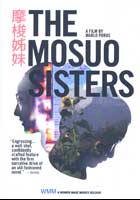
The Mosuo Sisters 2013
Distributed by Women Make Movies, 115 W. 29th Street, Suite 1200,New York, NY, 10001; 212-925-0606
Produced by Marlo Pora and Yu Ying Wu Chou
Directed by Marlo Poras
DVD, color, 80 min.
Jr. High - General Adult
Asia, Culture, Gender, Sociology
Date Entered: 08/27/2014
Reviewed by Hong Cheng, Instruction Librarian, LaGuardia Community College, City University of New York, Long Island City, NYMosuo is a tiny minority ethnic group of 40,000 people in Southwest China, and has the last remaining matriarchal society there. Economically, most residents still heavily depend on labor-intensive agriculture. With the expansion of urbanization, many young Mosuoes migrate to developed cities for better-paying jobs. This documentary presents the story of sisters Juma and Latso: the elder sister Juma gave herself one more chance to change her life but fails to bring her younger sister Juma out of the village as she promises.
The story begins in Beijing when the two sisters are working in a night club. However, they are unable to support themselves working as performers when the global financial crisis hits in 2008. Their only choice is to go back to their hometown thousands miles away. Facing financial scarcity at home, Latso is determined to find a job in Chengdu to help the family. Living in a tiny apartment with her boyfriend, Latso resumes to her job as a singer at a club, occasionally dealing with difficult customers. At the same time, Juma gradually loses the hope of leaving her hometown, instead, she starts to date a local man and ties the knot. The turning point of Latso’s life comes when she and her boyfriend discuss settling down in his hometown, a city far away from the Mosuo community. As the main breadwinner, Latso is not able to live far away from her family, so she ends the relationship and returns to her village with sorrow and sadness. Eventually, Latso begins to understand Juma’s choice of being a traditional Mosuo woman and bearing a Mosuo child. Maybe, their children will be the last generation of real Mosuoes.
The film may set a depressing tone, but the story truly reflects the reality that people in rural areas have very little power and how the rapidly growing economy assimilates the culture that has existed for hundreds of years. Many ethnic groups in China face the dilemma that they have to either give up the traditional culture to fit into the mainstream, or live in poverty. Life is about making choices and adjusting to changes. The director uses her camera to reveal a true picture in China: what to lose and what to keep in today’s world. There are not many sources about Muoso culture in the market, so the film is highly recommended for academic libraries and school media centers.